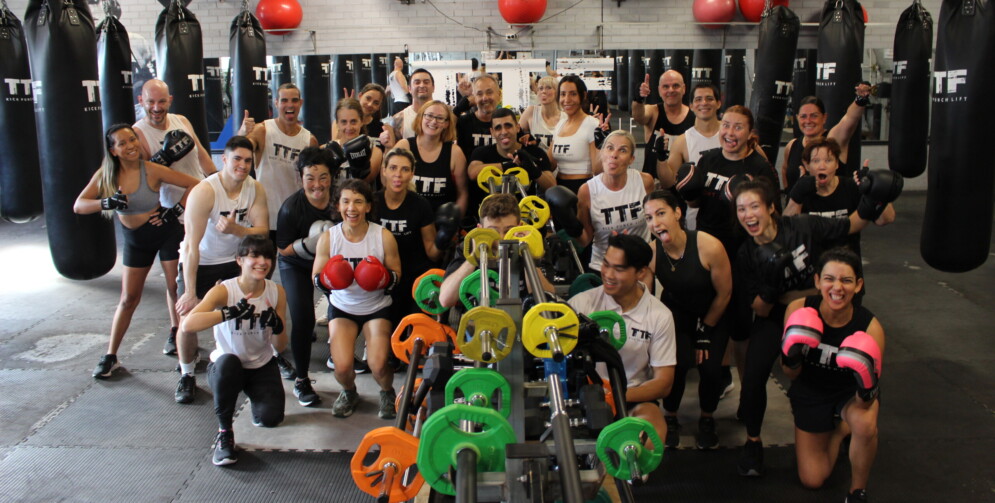1. Location & Accessibility
A gym that’s easy to reach removes a significant barrier to regular attendance. Consider both distance and travel convenience when evaluating potential clubs.
Facilities with multiple sites and extended hours cater to varied schedules.
Our Gym is located in an exceptional spot in Adelaide, just check it out:
Multiple Sites
Having more than one branch increases the likelihood that you’ll find a location close to home, work, or school, reducing travel time and increasing consistency.
It also provides flexibility if you relocate or want to vary your workout environment without changing memberships.
Extended Opening Hours
Gyms that open early and close late—or operate around the clock—accommodate both shift workers and traditional 9-to-5 schedules alike.
Research shows that flexible hours correlate with higher attendance rates, as members can fit sessions around unpredictable commitments.
2. Class Variety & Specialization
Diverse programming keeps workouts engaging and targets different aspects of fitness. Look for clubs that offer a balanced mix of cardio, strength, mobility, and skill-based classes.
Specialized sessions—such as non-contact cardio kickboxing or high-intensity interval training—help you develop new skills while preventing plateaus.
Cardio & HIIT Classes
High-intensity classes boost cardiovascular health and metabolic rate. Options like cycle, rowing, or interval circuits engage multiple muscle groups and improve VO₂ max.
Studies indicate that HIIT formats can deliver equal or greater fitness gains in less time compared to steady-state cardio.
Strength & Functional Training
Weight-based and functional workouts build muscular strength, bone density, and daily movement proficiency. Look for classes that incorporate barbells, kettlebells, and body-weight exercises.
Balanced strength training complements cardio programming and reduces injury risk by improving muscular support around joints.
3. Trainer Expertise & Support
Qualified instructors ensure safe technique, personalized progression, and effective motivation. Verify that coaches hold recognized certifications in exercise science, sports therapy, or related fields.
Observe whether trainers provide corrections during group classes and are available for one-on-one advice.
Certifications & Continuing Education
Instructors with up-to-date qualifications demonstrate commitment to best practices and safety standards. Ongoing education in areas like biomechanics or nutrition further enhances the quality of guidance.
Ask about a coach’s credentials and any specialty courses they’ve completed.
Individualized Feedback
Even in group settings, effective trainers circulate to observe form, offer modifications, and answer questions—critical for minimizing injury risk and maximizing gains.
If personalized attention is a priority, inquire whether the club offers supplementary small-group or private coaching sessions.
4. Equipment & Facilities
Well-maintained equipment and clean facilities ensure a safe, efficient workout experience. Inspect key areas like weight zones, cardio machines, and functional rigs before committing.
Adequate space, clear signage, and regular maintenance schedules reflect a club’s attention to member welfare.
Variety & Maintenance
A mix of plate-loaded machines, free weights, resistance bands, and cardio equipment accommodates different training styles and goals.
Regular inspections and prompt repairs reduce downtime and hazards—ask staff how they monitor and service their equipment.
Cleanliness & Layout
Hygienic conditions—toweling stations, disinfectant sprays, and well-ventilated areas—are essential for health and comfort.
A logical layout with dedicated zones for stretching, conditioning, and strength work helps workflow and minimizes congestion.
5. Community & Atmosphere
A supportive culture fosters accountability and enjoyment. Visit classes to gauge the tone—do members encourage each other? Are instructors motivating without being overbearing?
Friendly environments help sustain long-term habits by making exercise feel social rather than solitary.
Member Interaction
Observe whether regulars greet newcomers, form workout groups, or share tips—signs of a cohesive community.
Positive social dynamics can increase adherence by up to 30%, according to behavioral studies.
Events & Challenges
Clubs that host periodic workshops, fitness challenges, or social meet-ups keep routines fresh and provide extra motivation.
Even simple events—like themed workout days or partner drills—create a sense of belonging and friendly competition.
Frequently Asked Questions
How important is class schedule flexibility?
Very. Gyms with varied class times and drop-in options let you fit workouts into unpredictable days, improving consistency.
Should I prioritize trainer qualifications over price?
Trainers with solid certifications can prevent injuries and optimize your progress—often worth a slightly higher fee compared to budget options.
How can I test a gym before joining?
Many clubs offer free trials or day passes. Use these to evaluate location, equipment, class quality, and atmosphere firsthand.
What’s a good member-to-trainer ratio in classes?
Smaller class sizes—ideally 1 trainer per 10–12 participants—ensure adequate individual attention and form correction.
Do I need special gear for my first class?
Basic items like a water bottle, towel, and supportive footwear suffice initially. Specialty gear (gloves, wraps) can be added as you progress.

